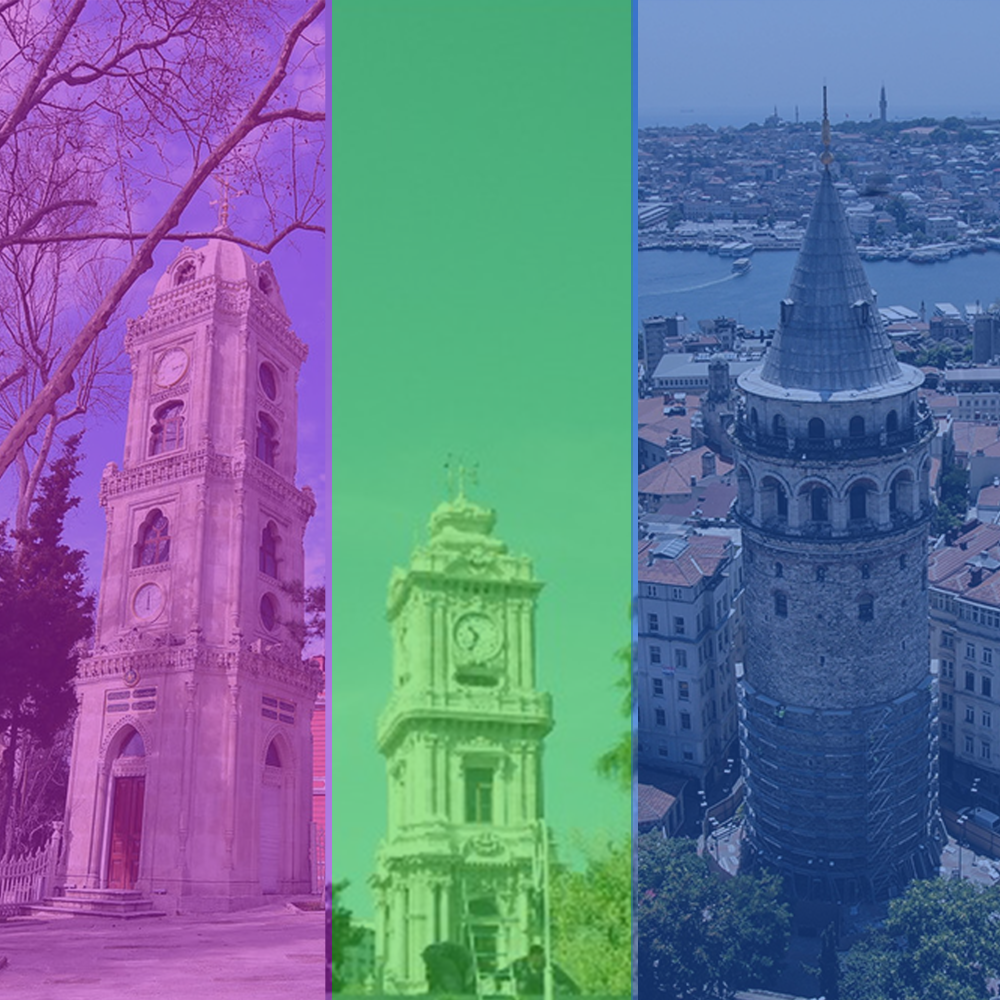Iconic Towers of Istanbul: The Meeting Point of History and Modernism
Istanbul is a unique city that hosted many civilisations throughout history. This rich cultural background is also reflected through the architecture of the city. The towers that adorn the silhouette of Istanbul are among the matchless structures that mirror the history and modern face of the city. Let us have a look at some of the most important towers of Istanbul.
Galata Tower: A Journey in the Traces of History

Galata Tower is one of the oldest and most famous towers in Istanbul. Built in 1348 by the Genoese, this tower decorates the magnificent view of the Golden Horn. The tower, with its height of 67 meters, is an indispensable spot for tourists who want to watch the panoramic view of Istanbul. Book your room at the Elysium Taksim hotel for a romantic and unforgettable stay with the fascinating view of the Galata Tower. Just click for online reservation.
Maiden’s Tower A Pearl Embroidered with Legends
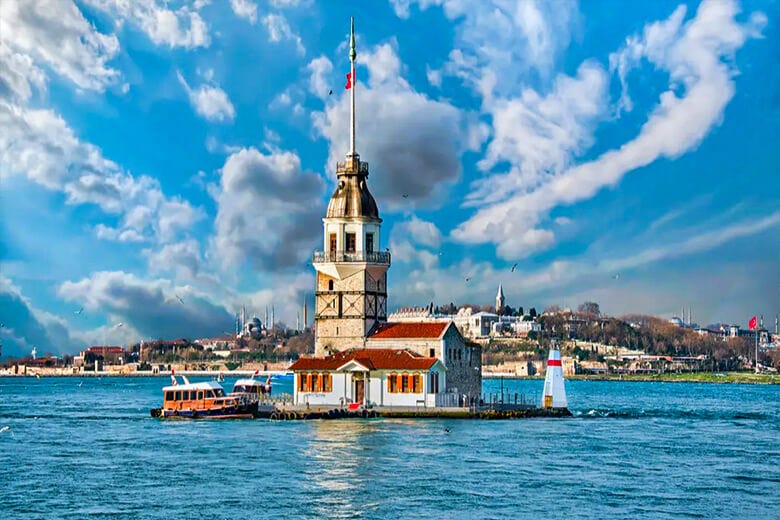
Maiden’s Tower is a unique structure located in the middle of the Bosphorus. The tower, which is the subject of legends, is one of the symbols of Istanbul. Dating back to the Byzantine period, the Maiden’s Tower today serves as a restaurant and event venue.
After the naval victory at Cyzicus, the Athenian general Alkibiadis built a special station on a small rock in front of Üsküdar in 408 BC, probably for the ships coming from the Black Sea.
The tower, which has become the symbol of Üsküdar, is the only monument remaining from the Byzantine period in Üsküdar. Its history dates back to 24 BC.
In 1110, the Byzantine Emperor Alexios I built a wooden tower protected by a stone wall. An iron chain stretched from the tower to another tower built in the Mangana district in Constantinople (a neighbourhood in the historical peninsula). The islet was later connected to the Asian shore with a defensive wall, whose underwater remains can still be seen. At the time of the Ottoman conquest of Constantinople in 1453, the tower housed a Byzantine garrison commanded by the Venetian Gabriele Trevisano. Later, the building was used as a watchtower by the Ottoman Turks during the reign of Sultan Mehmed the Conqueror.
Beyazit Tower: Firewatch Tower
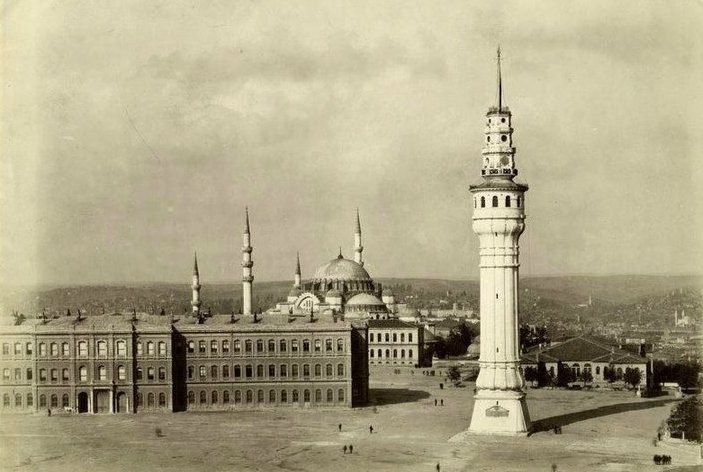
Beyazıt Tower was first built as a wooden tower in the Beyazıt district of Istanbul in 1749 with a height of 85 meters in order to observe and report fires. With the additions, the height of the tower reached 118 meters. It consists of three sections which are watching, signaling and ensigning levels. The stairs leading up to the watching point consist of 180 steps.
It was originally built of wood. It burned down in the Cibali fire in 1756. The tower was rebuilt in 1826 and burned down again during the Janissary Revolt. The tower was rebuilt for the third time in 1828 during the reign of Sultan Mahmud II by Architecture Senekerim Balyan. Fire was being signaled by baskets suspended from the Beyazıt Tower during the day and by lighting lanterns at night. In the section of the tower facing Beyazıt Square, there is an inscription with the monogram of Sultan Mahmud II. The inscription was written in verse by Yesarizade Mustafa İzzet Efendi and Yesarizade Mustafa İzzet Efendi also made the calligraphy of it.
Dolmabahce Clock Tower: An Elegant Architecture
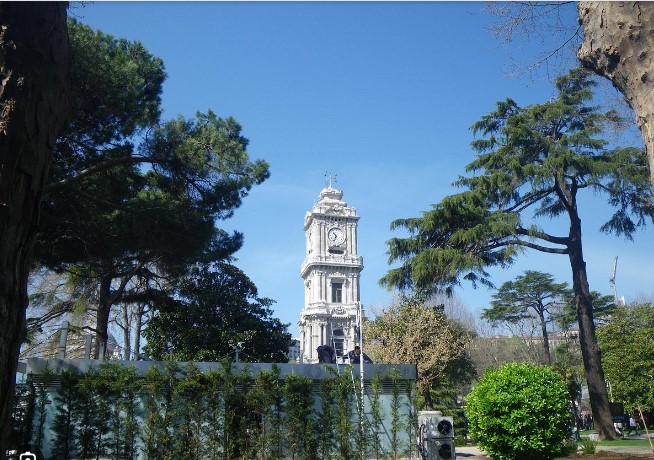
Dolmabahçe Clock Tower is located between Bezmi Alem Valide Sultan Mosque and the Sultanate Gate of Dolmabahçe Palace. It was built between 1890-1895 by Sultan Abdülhamid II.
It was built by the palace architect Sarkis Balyan in Neobaroque and Ampir style. The 27 meter high and 4-storey tower has 94 steps. The surface of the stairway landings is made of colored stones in geometric shapes. The structure measuring 8.50 x 8.50 m and the tower columns stand on a 12 x 12 m marble platform. There are six steps stairs on each side of the tower and a two-story fountain at the corners.
Three of the ground floor facades have windows and the other has a door, and each surface has a barometer inside the arch curves. Double columns on both sides of the doors and windows decorate this floor.
The facades of the 7.40 x 7.40 m first floor are very ornate. On the sea and land sides of the clock tower, there are the tughra of Sultan Abdülhamit II.
The second floor (6.00 x 5.00 m) is plainer than the first floor. Access to the third floor is ensured by a balcony with railings.
There is a clock on its each facade. The clocks are of French manufacture. The clock on the seaward side is set separately while the other three are set all together. The clock branded Paul Garnier, provided by the watchmaker Johann Meyer, was partially converted to an electronic system in 1979 and is still in working order.
Yıldız Clock Tower: Traces of the Ottoman Empire
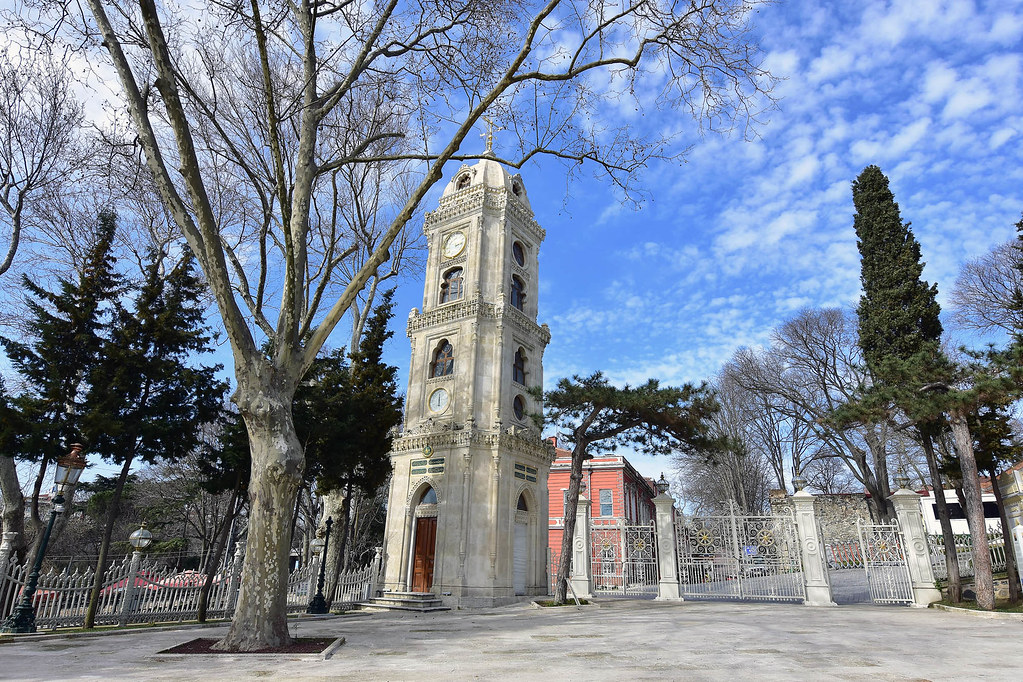
Yıldız Clock Tower is a clock tower that is part of the Yıldız Palace complex. It is in Yıldız neighborhood of Beşiktaş district of Istanbul. It is located in the southwest corner of the courtyard of Yıldız Mosque.
It was built in 1890 with a design that is a combination of Orientalist and neogothic style. It has three floors, rises on a square plan with fractured corners, and is covered with a pointed, segmented dome. There are also dormer windows with segmented arches on the revetment section.
It has 3 stories and an octagonal plan in Ottoman and Neo-Gothic style. There are 4 inscriptions on the first floor. There is a thermometer and barometer on the second floor. And on the top floor there is a clock room. It was undergone renovation in 1993. On the decorative roof there is a compass chamber.
To discover the history and beauties of Istanbul, you can check the room options of our hotel and make a reservation.
Source, Wikipedia


